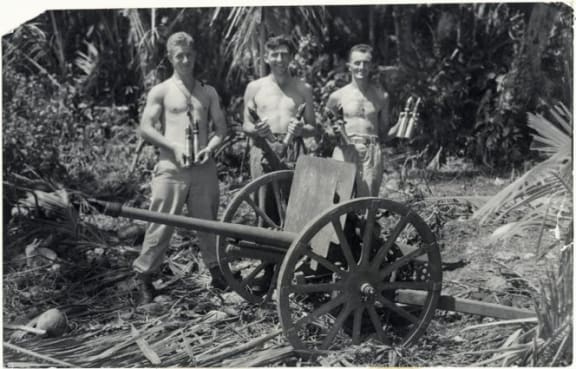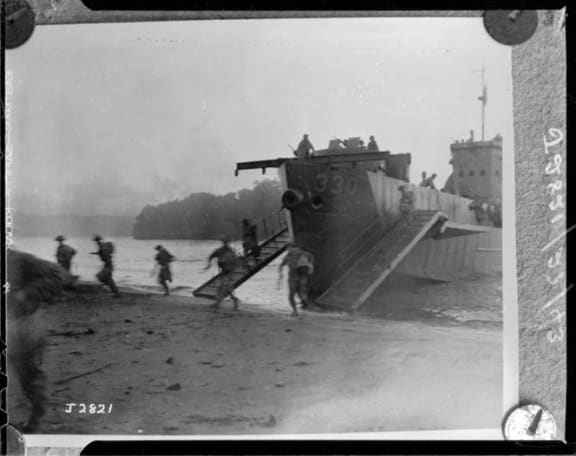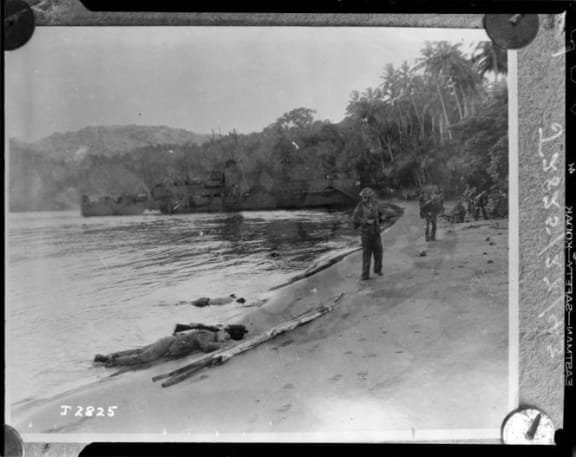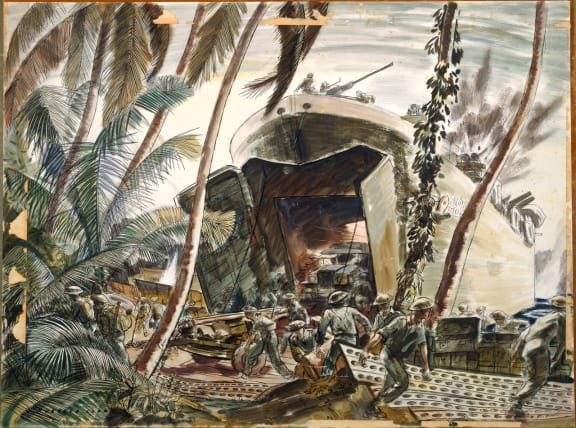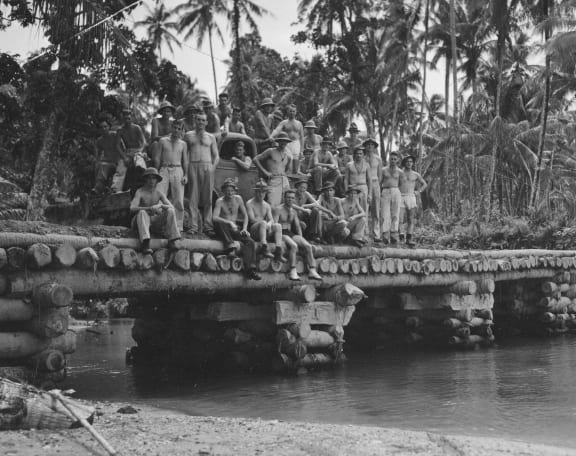Every year on 27 October, locals on remote Mono Island in the Solomons commemorate 'New Zealand Day'.
On that day in 1943, Kiwi and American soldiers landed on the island by boat to recapture it from occupying Japanese forces during WWII.
In the ensuing fights, which became known as the Battle of the Treasury Islands, 200 Japanese and 40 New Zealanders were killed.
At the time, NZ radio broadcasters also travelled to the Solomon Islands.
Sarah Johnston from Ngā Taonga Sound & Vision plays us some of their audio recordings.
In December 1941, Japan bombed Pearl Harbour in Hawaii, then made advances down through the Pacific throughout 1942.
Fear was growing that they would eventually attack New Zealand, and the following year NZ Army's 3rd Division joined US forces on a mission (codenamed 'Operation Goodtime') to try and push the Japanese forces back.
Their arrival by boat to Mono island – on 27 October 1943 – was New Zealand's first landing under fire since Gallipoli.
In the first recording, we hear platoon commander Les Booth and engineer Pat Keogh recall jumping out of a small American boat as Japanese machine guns rained down.
After the landing, Japanese soldiers were outnumbered but refused to surrender and went into hiding, fighting the New Zealanders mostly at night in the thick jungle.
The New Zealand Mobile Broadcasting Unit travelled to the Solomon Islands to document the conditions for listeners back home.
In the second recording, we hear announcer Vivian Spencer describing the stress that the evening soundtrack of the jungle caused to soldiers trying to listen for the enemy.
Later in November, Mono and Stirling Islands were eventually declared clear of Japanese soldiers.
An airfield and radar base was set up on the Treasury Islands and several thousand men served there over the following year.
Ken Sandford, a New Zealand army captain from Hamilton, was one.
In the third recording, we hear his description of the situation and his concerns the Japanese forces were still not far away.
At the height of the campaign, several thousand foreign soldiers were stationed on the Treasury Islands – which must have been bizarre for the locals – and by the end of the war, they had all left.
The final recording we hear is a song – written by the local people and sung in Pidgin – about the war between the Americans, New Zealanders and Japanese.

The song was recorded in 1944 by the New Zealand Mobile Broadcasting Unit.
A party of New Zealanders will travel to the Treasury Islands this Saturday for a memorial service at the cemetery on Mono Island. The 40 Kiwi soldiers were initially buried there and later reinterred in a war cemetery on New Caledonia.
